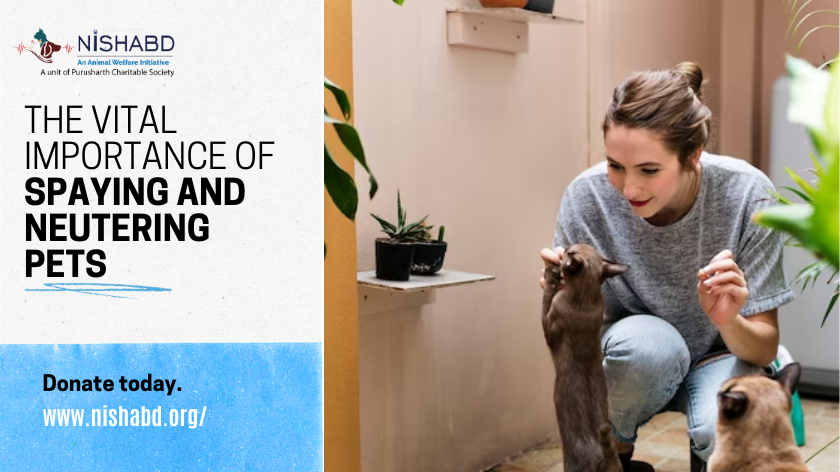Vital Importance of Spaying and Neutering Pets

Our pets are cherished members of our families, offering us unconditional love, joy, and companionship. Just as we care for their health and happiness, it’s crucial to consider their reproductive health too. Spaying and neutering pets, often known as “fixing” pets, are essential to responsible pet ownership.
Together, we’ll delve into the significance of spaying and neutering, their benefits, and why they’re pivotal in ensuring the well-being of our beloved furry friends.
Understanding Spaying and Neutering Pets
“Saving one dog will not change the world, but surely for that one dog, the world will change forever.” – Karen Davison
- Understanding Spaying: Spaying, also known as ovariohysterectomy, is the surgical removal of a female pet’s ovaries and often the uterus. It prevents the female dog from becoming pregnant and eliminates the risk of specific reproductive health issues.
- Understanding Neutering: Neutering Pets, or castration, is the surgical removal of a male dog’s testicles. It curbs the male dog’s ability to reproduce and can help mitigate some behavioral issues.
Benefits of Spaying and Neutering
“A small price to pay for the love and companionship our pets give us.” – Ingrid Newkirk
- Population Control: Spaying and neutering help control the overpopulation of pets. Millions of cats and dogs end up in shelters yearly, and then many are euthanised due to a lack of homes. By spaying and neutering, you contribute to reducing this heartbreaking issue.
- Health Benefits: Spaying females pets eliminates the risk of uterine infections and dramatically reduces the risk of mammary gland tumours. Neutering males prevents testicular cancer and lowers the risk of prostate problems.
- Behavioral Improvements: Fixing pets can lead to more manageable and well-behaved companions. It reduces territorial marking, aggressive behaviour, and the urge to roam for a mate.
- Longevity: Spaying and neutering can contribute to a longer, healthier life for your pet by reducing the risk of certain diseases and injuries associated with mating behaviours.
Right Time to Spay and Neuter
- Age and Timing: The ideal age for spaying or neutering can vary by species and breed. Consult your veterinarian to determine the best time for your pet. Early spaying and neutering are becoming more common and offer benefits like faster recovery and reduced risk of certain diseases.
- Responsible Ownership: Spaying and neutering should be part of responsible pet ownership. Ensure that your pet is in good health before the procedure, and follow your veterinarian’s post-operative care instructions diligently.
- Adoption and Rescue: Many shelter pets are already spayed or neutered before adoption. If you’re considering adopting a pet, inquire about their spay/neuter status.
Supporting a Brighter Future
“The greatness of a nation and its moral progress can be judged by the way its animals are treated.” – Mahatma Gandhi
Spaying and neutering are not only responsible but also compassionate choices. By taking these steps, you’re contributing to a brighter future for your pet and countless others. You’re helping to reduce the burden on animal shelters and the unfortunate euthanasia of pets due to overpopulation.
Furthermore, you ensure your pet’s health[1], happiness, and longevity. We provide the opportunity to live a life filled with love, free from the risks and challenges associated with unchecked reproduction.
As we understood that spaying and neutering are essential aspects of pet care and responsible ownership. They offer numerous benefits to both individual pets and the broader community. When you choose to spay or neuter your pet, you’re positively impacting their life and the world around them.
Remember, a single decision can change your pet’s world but also the world of countless other animals!
Read our Article: Navigating the Teenage Phase: Understanding and Addressing Rebellious Behaviors of Dogs in Adolescence
